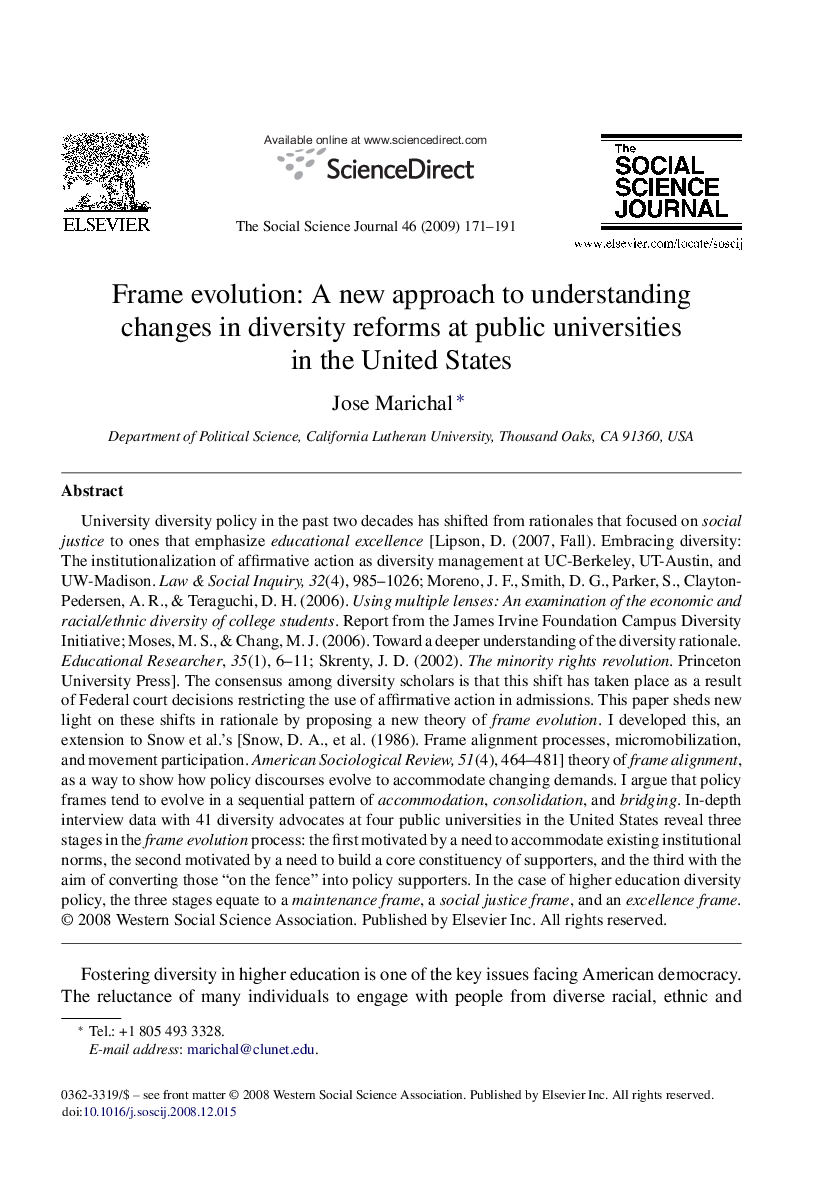| Article ID | Journal | Published Year | Pages | File Type |
|---|---|---|---|---|
| 140667 | The Social Science Journal | 2009 | 21 Pages |
University diversity policy in the past two decades has shifted from rationales that focused on social justice to ones that emphasize educational excellence [Lipson, D. (2007, Fall). Embracing diversity: The institutionalization of affirmative action as diversity management at UC-Berkeley, UT-Austin, and UW-Madison. Law & Social Inquiry, 32(4), 985–1026; Moreno, J. F., Smith, D. G., Parker, S., Clayton-Pedersen, A. R., & Teraguchi, D. H. (2006). Using multiple lenses: An examination of the economic and racial/ethnic diversity of college students. Report from the James Irvine Foundation Campus Diversity Initiative; Moses, M. S., & Chang, M. J. (2006). Toward a deeper understanding of the diversity rationale. Educational Researcher, 35(1), 6–11; Skrenty, J. D. (2002). The minority rights revolution. Princeton University Press]. The consensus among diversity scholars is that this shift has taken place as a result of Federal court decisions restricting the use of affirmative action in admissions. This paper sheds new light on these shifts in rationale by proposing a new theory of frame evolution. I developed this, an extension to Snow et al.’s [Snow, D. A., et al. (1986). Frame alignment processes, micromobilization, and movement participation. American Sociological Review, 51(4), 464–481] theory of frame alignment, as a way to show how policy discourses evolve to accommodate changing demands. I argue that policy frames tend to evolve in a sequential pattern of accommodation, consolidation, and bridging. In-depth interview data with 41 diversity advocates at four public universities in the United States reveal three stages in the frame evolution process: the first motivated by a need to accommodate existing institutional norms, the second motivated by a need to build a core constituency of supporters, and the third with the aim of converting those “on the fence” into policy supporters. In the case of higher education diversity policy, the three stages equate to a maintenance frame, a social justice frame, and an excellence frame.
